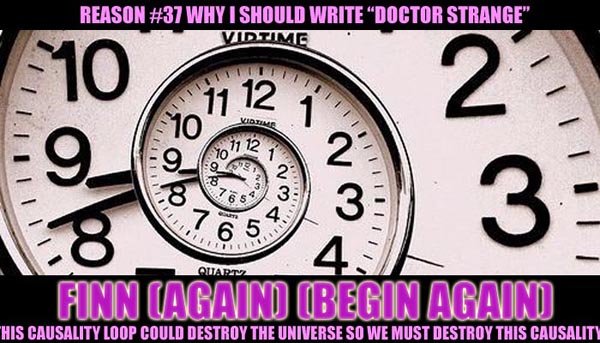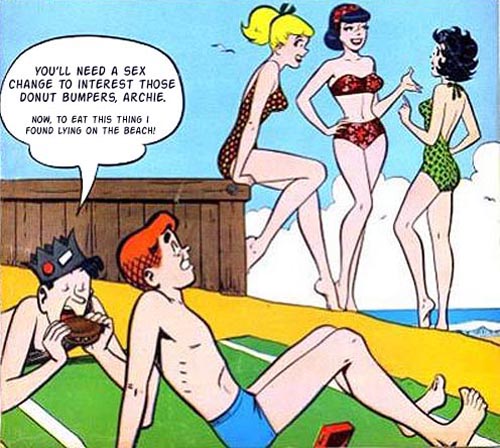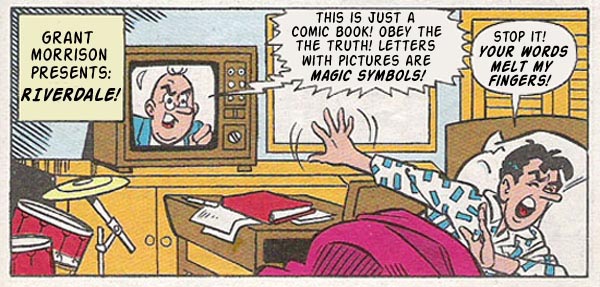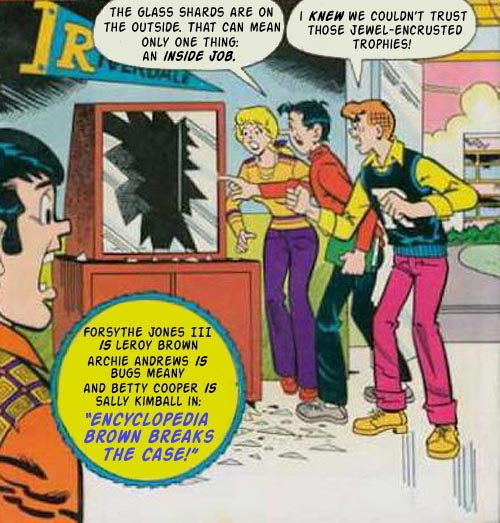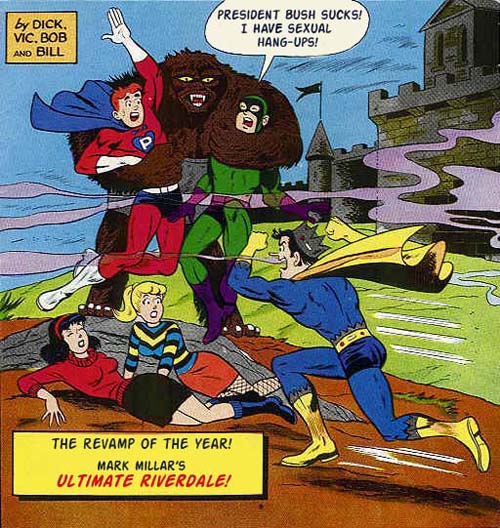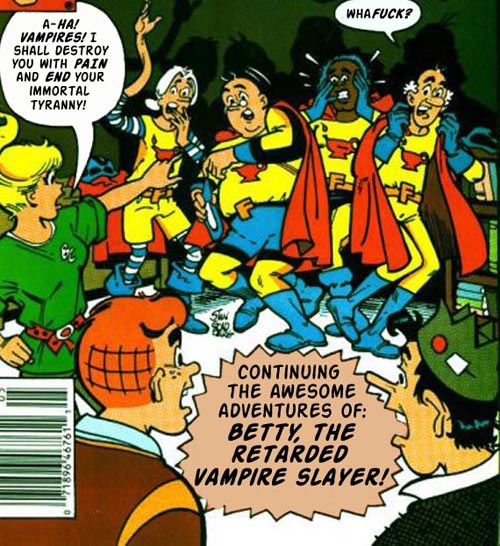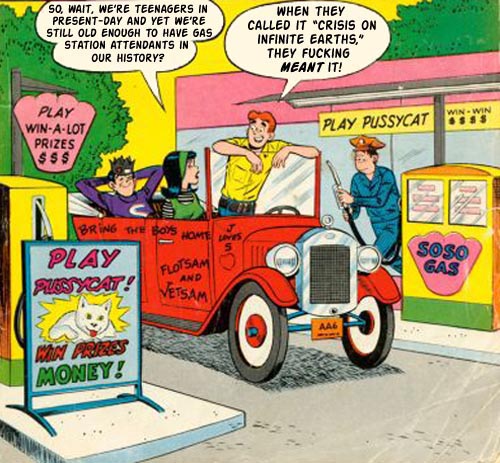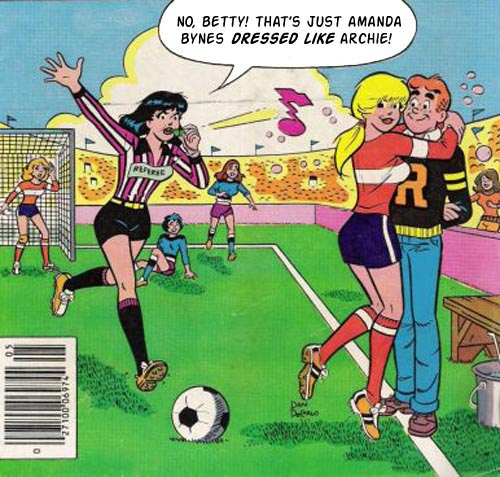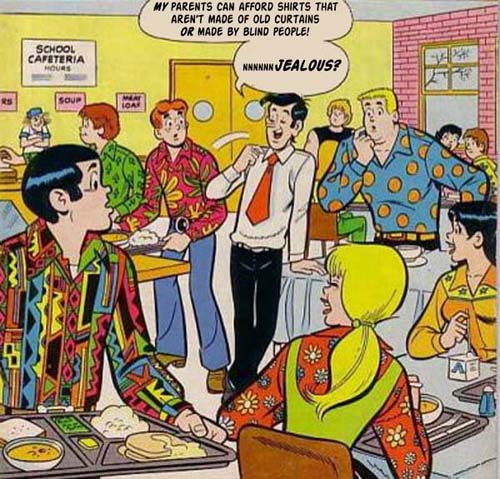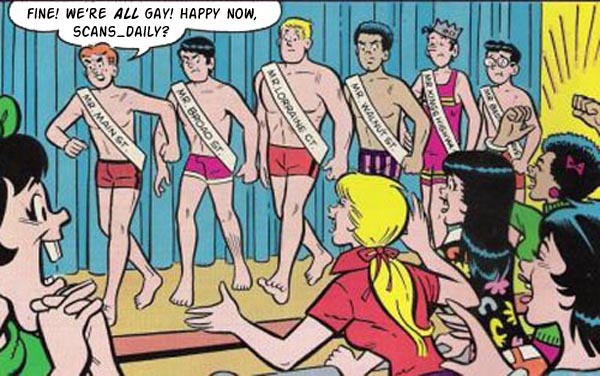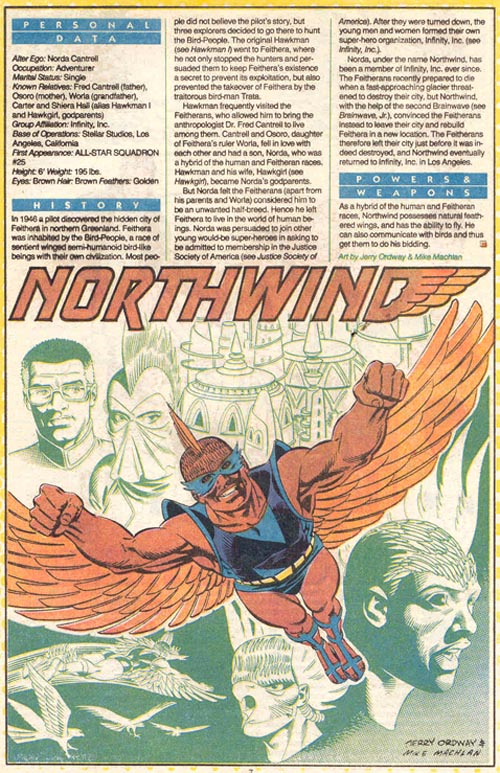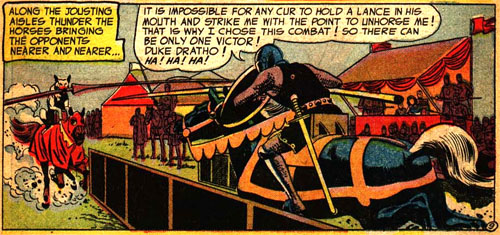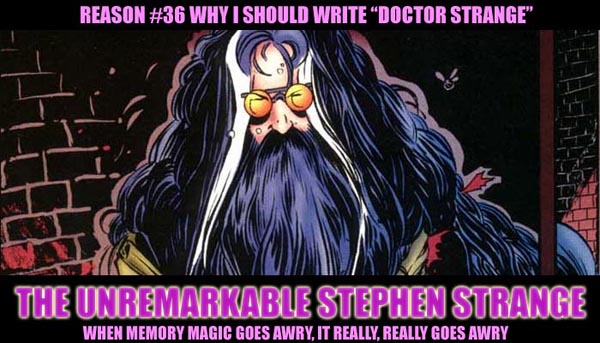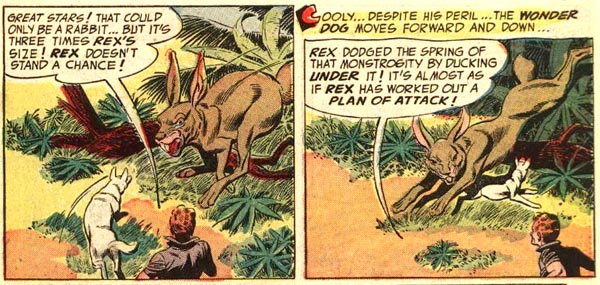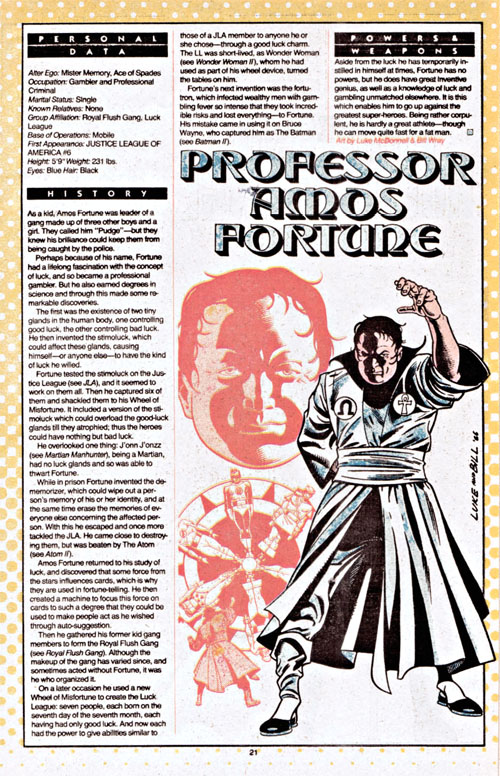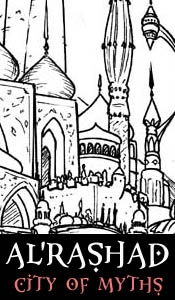I make no secret of it; I adore the Marvel Essentials line of trade paperbacks. My own blog, Fraggmented, has dozens of posts devoted to these insane 500+ page black-and-white chunks of classic comics, each one giving you twenty or more issues of a title for an almost sickeningly reasonable cost. (Some of the collections of late 80s and early 90s comics, like X-Men and Wolverine, actually give you the comics for less than the original cover price.) There’s something so wonderful about being able to sit down with a comic and see the long-term plotlines unfolding in front of your eyes, taking in years of development in just a few volumes. I’ve been buying these for years now, picking up classic runs of Fantastic Four and Avengers for a song and taking a chance on comics like Man-Thing and Killraven that I probably wouldn’t have bought if not for the cheapness of the format. I won’t say that this is the last word on the subject–heck, I could probably do a whole other post on the similar Showcase Presents line at DC–but here are my top ten Essentials for those of you interested in dipping in.
10. Captain America, Volume 1-4. There’s a Volume Five coming out soon, and I’ll probably buy that when finances permit as well. For all that Captain America is seen nowadays as a stodgy, stuffy agent of the status quo, he was originally a counter-culture firebrand and a lens through which a variety of excellent writers looked at the changing face of America. And for all that Ed Brubaker tries to inject some “edginess” into Cap, he’s still light-years away from the smack-talking rebel Stan Lee once wrote, and you’ll be amazed at how interesting Steve Rogers was as a person before Mark Gruenwald bowdlerized him in the 80s. (Don’t get me wrong, I like a lot of what Gruenwald did, but he seriously blanded down Steve Rogers’ personality.) The series is a little inconsistent, but there are long stretches of good stuff in every volume. Highlights include Cap fighting it out with Nixon on the White House lawn, and delivering a humiliating smack-down to a villain that was so thorough the character never appeared again.
9. Defenders, Volumes 1-3. Actually, you could probably stick to the first two books and come away happy–Steve Gerber’s magnum opus that closed out his run on Defenders hasn’t entirely aged well, and comes off a little pretentious now that the 70s culture that nurtured it has faded away. But this is still a classic Defenders run, and the reason the series is fondly remembered long after the multitude of failed relaunches and reunions. (Tip for prospective Defenders relaunchers: If you go back and read these books, the Silver Surfer and Namor left the team after about five issues. For the most part, the stable Defenders team was Doc, Hulk, Hellcat, Valkyrie and Nighthawk.)
8. Power Man, Volume 1. It’s interesting to see the way that Luke Cage has been almost a cultural mirror of African-Americans over the course of his appearances in the Marvel Universe; he went from being a raw, hard-edged underdog who refused to let his oppression at the hands of a racist prison system break his spirit, to a walking comedy jive stereotype, to a street hustler and borderline thug, and finally to a cynical, worldly-wise veteran of the revolutionary 70s. But he was never better than in his first few appearances, when his character was treated with total sincerity by writer Archie Goodwin, and it’s worth picking up the book to read those old stories. (The later volumes are good too, as is the Iron Fist solo series, but I’m sticking with the best stuff for purposes of this list.)
7. Silver Surfer, Volume 2. Volume 1 is fairly readable, more notable for its lovely Buscema art than its stories, but Volume 2 is where the story really begins. Steve Englehart finally figures out how to make the Surfer work in a way that no previous writer ever had, simply by freeing him from his imprisonment on Earth and putting him in space, his natural millieu. You’ll need to have a tolerance for certain Englehart-isms (oh, look! It’s Mantis again! And she’s even more bad-ass!) but the series is space opera at its epic best. Definitely deserving of a third volume.
6. X-Men, Volumes 1-4. Yes, it’s probably blasphemy to put the Claremont/Byrne era of the X-Men this low on the list, but trust me–when you actually go back and read them, you find that all of Claremont’s annoying little tics as a writer (his over-narration and purple prose, his borderline creepy obsession with his female characters, his habit of having everyone reiterate their major personality traits for the reader every few pages) didn’t start when he returned to the series in the 21st century. Even so, this was a collaboration that was more than the sum of its parts, and the work they did here has let every subsequent writer coast on their efforts, so it’s worth picking up just to get the backstory.
5. Spectacular Spider-Man, Volumes 1-2. Bronze Age Spider-Man was always a treat–in the wake of the death of Gwen Stacy, there was always a feeling of uncertainty and adventurousness about the title. Just like in the early days, there were no sacred cows…or at least, it seemed like it…and this is some particularly fine Bronze Age Spider-Man. You’ll find Gerry Conway, Roger Stern and Marv Wolfman all writing the title in these two volumes, and those guys are master craftsmen of a sort that the medium just doesn’t turn out anymore. (OK, I tell a lie. Jeff Parker and Fred van Lente have shown huge chops in that regard as well. But Roger Stern still shows everyone How It Is Freaking Done.)
4. Super-Villain Team-Up, Volume 1. Despite my complaints about “decompression” and “event comics” on my own blog, this was a big epic crossover before there were big, epic crossovers, and I love it. Doctor Doom and Namor team up to crush the surface world, only to wind up opposing each other in a gigantic saga of double-crosses, clashing egos, and duels of sheer will between two of Marvel’s best bad guys. There are a few other stories that close out the book (the “Red Skull vs. Hitler” one is a classic, as well) but you’re buying this one for the big Doom/Namor war, and it’s worth it.
3. Doctor Strange, Volume 1. Speaking of collaborations that are more than the sum of their parts, this is Ditko and Lee at their finest. Doctor Strange’s origin story has the elegant wonder of a child’s fairy tale, and the stories that follow introduce an entire epic mythos of cosmic strangeness that has probably never been equaled in the comic-book medium. (Perhaps by Lovecraft in the pulps, but nobody did weird tales in comics the way Ditko and Lee did it.) Later volumes are alright as well, but they’re definitely all trying to imitate the effortless grace of these awesome early stories.
2. Tomb of Dracula, Volumes 1-4. A bold, experimental, almost unprecedented comic, this Marv Wolfman/Gene Colan collaboration (they worked together on almost the entire run of the series) puts the focus on Dracula not as a mere monster, but as a tortured soul in the vein of Milton’s Satan. He is constantly the prisoner of his own pride as much as anything else, denied the delights of a living existence and yet unwilling to surrender to death. As drawn by Colan’s gorgeous, evocative, moody pencils (this is one book I’d recommend in black and white over color), it’s a helluva ride, especially given that Wolfman also gives us a great group of sympathetic vampire hunters to root for. (Yes, this is where Blade first shows up. He’s not even the coolest of the bunch.)
1. Spider-Man, Volume 1. And this is Lee and Ditko at even finer than their finest. It’s a collaboration that finally burned them out on each other, but what the hell, the Beatles didn’t last forever either. And this…every single Spider-Man writer since then, including Stan Lee himself, has been trying to recapture the singular alchemy of these 22 issues. Everything from Spider-Man’s origin to his battles with the Chameleon, the Lizard, the Vulture, Doctor Octopus, Kraven the Hunter, the Enforcer, the Green Goblin, Electro, the Sinister Six and the Scorpion has damn near been carved into stone as the Way Spider-Man Should Be, and here Lee and Ditko seem to bring it off almost casually. Much has been made of the question of “Who deserves the credit for these?”, but that misses the point; Lee needed Ditko’s imagination and unflinching moral sensibility, and Ditko needed Lee’s humanizing touch and deft dialogue. If you’re someone who thinks that Stan Lee is a tired old hack who had more of a knack for self-promotion than for writing, read this comic. It still holds up, even after all these years.
